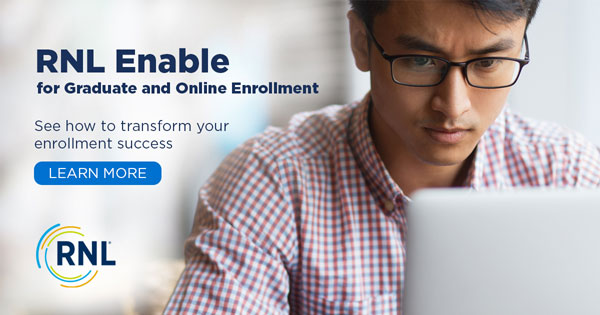enrollment
Online Education: What We Need to Know About Working with OPMs
I recently had the chance to talk with Josh Kim and Eddie Maloney—the authors of the Academic Innovations blog on Inside Higher Education—about a recent blog on the need for serious research to be done on the institutional impact of working with online program management companies (OPMs). What drew me in was the following statement in the opening of the blog:
“We seem to be willing to sign agreements with online program management companies, but not engage in critical inquiry about their impact. Alternatively, we may choose not to partner with an OPM out of beliefs about these arrangements, making this decision in the absence of data.”
In between writing the Inside Higher Ed blog, Eddie and Josh lead their institution’s online initiatives (at Georgetown and Dartmouth respectively) and they recently wrote a book about Learning Innovation and the Future of Higher Education. They followed that up with an e-book about the impact of the pandemic on higher education (The Low-Density University).
Here’s the big question that guided our discussion: Does working with a vendor that essentially takes over developing and running your online programs ultimately help or hinder institutions from being ready to serve students for the next hundred years?
You can watch our full conversation in the following video and read highlights of our conversation below.
Top: Eddie Maloney (left) and Josh Kim (right). Bottom: Scott Jeffe
Online Education has taken a great leap forward during the pandemic
Josh Kim: The pandemic has provided a natural experiment for higher education. Huge numbers of schools have schools that have built online programs—some with OPMs, some on their own, and some in some kind of blending of the two. This puts us in a good place now to look back and see how those pathways—necessitated by the need to quickly move to remote learning—have affected our institutions. Has that affected our infrastructure? How did it go for the learners? How did it go for the faculty? What was the transition like? I think we need to do that research. And right now it’s not clear who is going to do that cross-institutional work, cross-institutional research.
Online education has quickly proven to be a “core capacity.”
Eddie Maloney: The last 18 months have surfaced a fundamental question: “What is a core capacity of a university in relationship to teaching and learning?” I think we’ve proven that online education is one of those core capacities. This leads to a serious question: How do you think about what partnerships you create in order to ensure that core capacity, with an eye on both teaching and learning and institutional reliance? I think we need to really think about the effectiveness of various types of partnerships and their relationship to the core mission of higher education institutions—educating students.
Success has to be about a lot more than dollars.
Eddie Maloney: When schools work with an OPM, it is in many ways a “consumer relationship.” You’re working with a vendor, you’re paying someone to do something for you. And a lot of what we have now is “word of mouth” feedback on how well they work. There are no Yelp or Amazon reviews on OPMs, but you might contact a colleague to ask “How’s it going for you?” The OPM itself will provide you all kinds of data about their success, but that data usually focuses on financial success.
But that’s only part of the story. We don’t have a really good sense of how these vendors actually affect students, how they affect the university as a whole, how they affect the future of the university. These are long-term contracts—often 8 to 10 to 12 years—which is almost five generations of technology and changes in higher education that you can imagine playing out. So trying to understand that long-term impact is crucial.
Were schools with existing OPM relationships better or worse prepared for the pandemic?
Josh Kim: So, first, this is one of the big questions we need hard data on. But anecdotally, it does seem pretty clear that schools that built internal capacity to create their own online programs were able to transition and have greater resilience during shocks—whether that be the pandemic or the next thing that comes along—whether that is extreme weather, the next pandemic, or something else. Having a robust technology infrastructure that allows for academic continuity through online learning is no longer “nice to have” but rather a core strategy for anti-fragility for colleges and universities.
Eddie Maloney: This is about so much more just creating a teaching and learning center, or asking a couple of people to pay attention to online. That is not what made some institutions more resilient than others. It has to be cross-cultural, or cross-campus, cross-university, cross-college engagement, and integration. There has to be a universal sense of trust, a belief that the people who focus on online education are doing that work are making an investment in and for the institution. If you farm all that out, no investment is being made in the resilience of the institution, you’re just giving away a lot of your revenue.
Transform your success with graduate and online enrollment
Find out how RNL Enable can support your graduate and online enrollment across the student lifecycle:
- Strategy and Market Research
- Instructional Design
- Lead Generation and Enrollment
- Student Success and Completion
